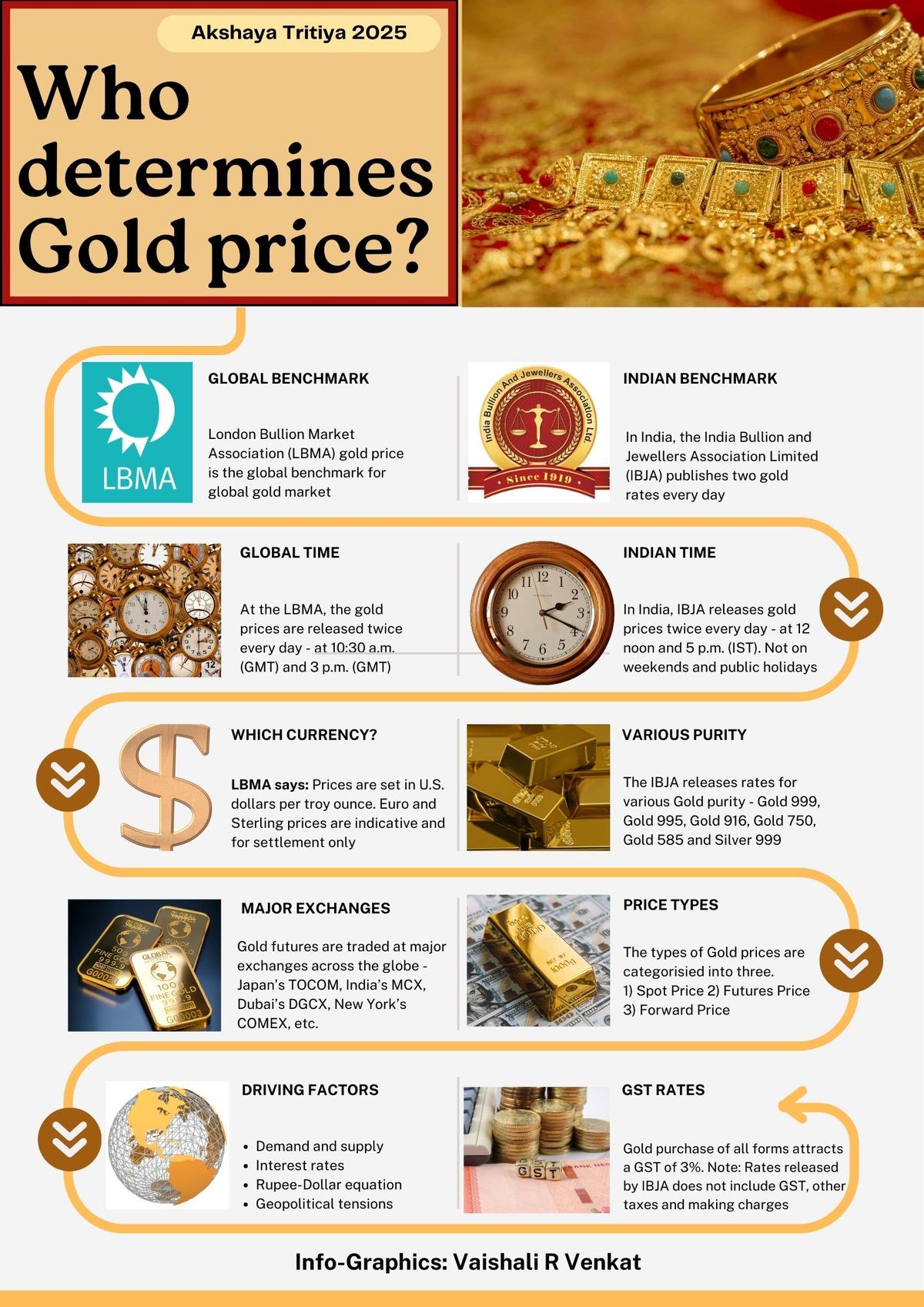“India’s gold demand witnessed a 15% on-year decline to 118.1 tonnes in the January-March quarter of this year, even as value grew by 22% to ₹94,030 crore owing to surging prices,” the World Gold Council (WGC) said on Wednesday (April 29, 2025.)
According to the WGC forecast, India’s gold demand for 2025 is expected to be between 700-800 tonnes. Gold prices have risen 25% since the beginning of 2025, approaching the key psychological threshold of ₹1,00,000 per 10 gm, affecting consumer buying patterns.
“The elevated prices have impacted affordability. Yet, the enduring cultural significance of gold, especially ahead of Akshaya Tritiya and the upcoming wedding season, continues to support buying sentiment,” WGC India CEO Sachin Jain said in its quarterly report.
According to experts, the gold market is humming with excitement on the auspicious occasion of Akshaya Tritiya, which holds immense cultural significance in India, traditionally marking a surge in gold purchases.
Record prices have pushed consumers towards smaller, lightweight pieces, with some postponing purchases hoping for price dips. Despite this, wedding-related demand remained relatively stable given its essential nature.
Gold prices cool from record high, but is the rally just getting started?
“Experts believe, while the current price levels might prompt some to exercise caution, the inherent cultural significance of gold during Akshaya Tritiya, coupled with its enduring status as a reliable asset, suggests continued positive momentum in buying,” they added.
Investment demand, however, remained resilient with a 7% rise to 46.7 tonnes, from 43.6 tonnes in the corresponding period. Moreover, amid financial market uncertainty, gold’s role as a safe asset has become more pronounced, and got reflected in a sharp uptick in demand for gold bars and coins.
However, jewellery demand declined by 25% to 71.4 tonnes during the first quarter of 2025 calendar year, from 95.5 tonnes in the year-ago period. This was the lowest volume since 2020, though value was 3% higher year-on-year, according to WGC.
Gold imports rose 8% to 167.4 tonnes in the January-March quarter, while recycling fell 32% to 26 tonnes, as consumers held onto their gold amid record prices. The average quarterly gold price in the first quarter of this year was ₹79,633.4 per ten gram, compared to ₹55,247.2 in Q1 2024.
Meanwhile, global gold demand has increased 1% to 1,206 tonnes in the January-March quarter of 2025 — the highest first-quarter level since 2019.
Published – April 30, 2025 01:32 pm IST




























